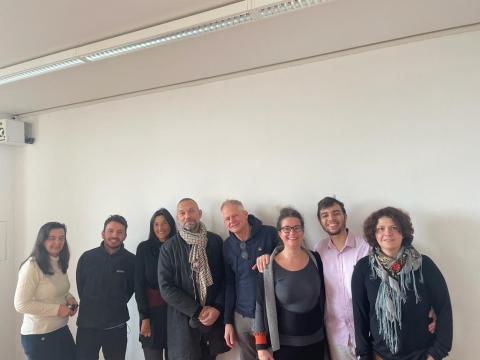Recognizing fake news in course CoMMiTTed
'Fake news is of all times, but has taken off with the corona pandemic. It is therefore an important subject of research. That is why we received a grant from the European Union to investigate the phenomenon,' says Jan Jaap de Ruiter, together with Max Spotti and students forming a team of Tilburg scientists, alongside Spanish, Portuguese and German colleagues who worked for two years on the project on fake news. It has just been completed. The goal was to create a teaching module with the results and give students tools on how to recognize fake news.
'By using historical examples, we show different types of fake news so that the mechanism behind it becomes clear and recognizable. For example, there was the great earthquake and tsunami of 1755 on All Saints' Day Nov. 1 in Lisbon. As people sat in church, the earth began to shake, fires broke out and the sea flooded the shores. It was interpreted as God's punishment for human sins. This affected non-believers; they could eventually be blamed. Similar consequences of fake news later were observed with the Jews in Europe and also recently with the corona pandemic: Chinese were held responsible, as well as migrants who would spread the virus.'
More awareness than before about fake news
One of the difficulties in recognizing fake news is that it often contains a half-truth. 'Precisely because it can sound credible, fake news poses a great risk of disrupting society. Problems arise when people want to impose their view of reality on others. And the danger now compared to the past, lies in the speed at which this kind of news is spread and the techniques that simplify methods to make it difficult to distinguish fact from fiction. '

Through the lesson module, students analyze examples of fake news and try to trace it back to its source. The material covers different characteristics of fake news, the agents (disseminators) and the users. 'At least the good news is that young people today are more aware of the phenomenon than in the past and can therefore see through it more quickly,' adds De Ruiter.
More information
The project is titled: CoMMiTTed - Covid, Migrants and Minorities in Teacher Education: A Fake News Observatory to Promote Critical Thinking and Digital Literacy in Times of Crisis. Also participating in the project were,students:Jaimy Pijpers, Larissa Souza and Bendegez Ken Bonecz, Nataliia Vdovychenco, Carmen Lupu and Husnain Ali Abid. For more information, please contact persvoorlichters@tilburguniversity.edu.
